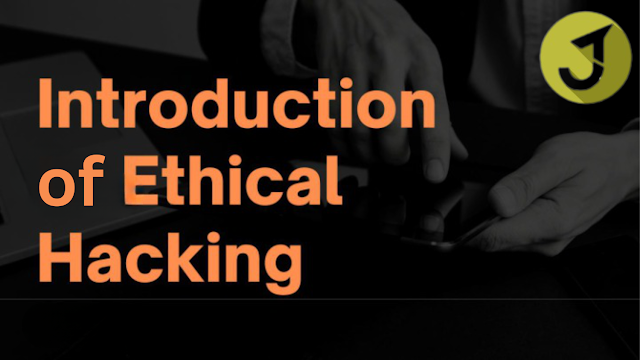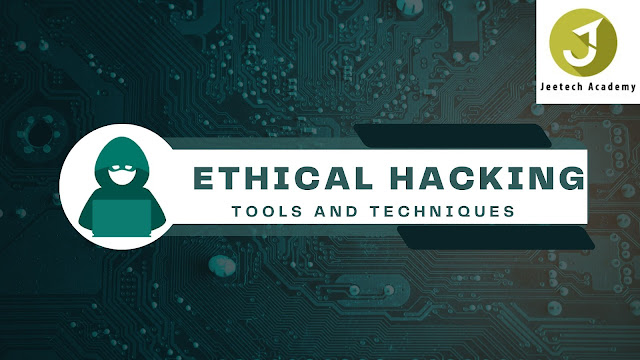Introduction of Ethical Hacking
Introduction of Ethical Hacking
Ethical hacking, also known as penetration testing or white-hat hacking, is a practice of identifying vulnerabilities in computer systems and networks to strengthen their security. In this article, we will explore the concept of ethical hacking, its significance, and its role in safeguarding digital assets.
1. Understanding Ethical Hacking
Ethical hacking involves authorized individuals, commonly known as ethical hackers, who simulate cyber attacks to identify vulnerabilities in computer systems, networks, and software applications.
These professionals work under a set of rules and guidelines to ensure that their actions are legal and serve the purpose of enhancing security. Ethical hackers use the same techniques and tools as malicious hackers but with a noble intention of protecting systems from potential threats.
2. Ethical Hacking Methodologies
Ethical hacking follows a systematic approach to identify vulnerabilities and assess the security of a system. There are several methodologies that ethical hackers employ, such as:
Reconnaissance
In this phase, the ethical hacker gathers information about the target system, including its network architecture, operating systems, and potential entry points.
Scanning
The scanning phase involves actively probing the target system to identify open ports, services, and vulnerabilities. This helps in understanding the attack surface and potential areas of exploitation.
Enumeration
During enumeration, the ethical hacker collects more detailed information about the target system, such as user accounts, network shares, and system configurations. This information is crucial for further analysis and exploitation.
Vulnerability Assessment
In this phase, the ethical hacker uses automated tools and manual techniques to identify vulnerabilities in the target system. These vulnerabilities can range from outdated software to misconfigurations that could potentially be exploited by attackers.
Exploitation
This step helps in demonstrating the potential impact of a successful attack and highlights the urgency of addressing these vulnerabilities promptly.
Reporting and Remediation
This report is then shared with the organization's stakeholders, including management, IT teams, and developers. The vulnerabilities are prioritized based on their severity, and remediation steps are proposed to address them effectively.
3. Tools and Techniques Used in Ethical Hacking
Ethical hackers utilize various tools and techniques to identify vulnerabilities and perform penetration testing. These tools can include network scanners, vulnerability scanners, password crackers, exploit frameworks, and forensic tools. They also employ techniques such as social engineering, network sniffing, and code review to uncover potential security weaknesses.
4. Legal and Ethical Considerations in Ethical Hacking
Ethical hacking operates within legal boundaries and is guided by a set of ethical considerations. Organizations and individuals who engage ethical hackers must ensure that proper consent and agreements are in place before any testing is performed. Ethical hackers must also abide by laws and regulations governing data protection, privacy, and computer misuse.
5. Future Trends in Ethical Hacking
As technology continues to advance, the field of ethical hacking is expected to evolve as well. Some emerging trends include:
Artificial Intelligence (AI) and Machine Learning (ML) in Ethical Hacking
AI and ML can enhance the capabilities of ethical hacking by automating certain processes, improving vulnerability detection, and analyzing vast amounts of data to identify patterns and potential threats.
Internet of Things (IoT) Security Testing
With the proliferation of IoT devices, ethical hackers will play a crucial role in assessing the security of interconnected devices and networks. IoT security testing will become increasingly important to prevent potential breaches and ensure the privacy of users.
Cloud Security Assessments
As more organizations adopt cloud computing, ethical hackers will focus on evaluating the security of cloud infrastructures, identifying vulnerabilities in cloud-based applications, and ensuring the protection of sensitive data stored in the cloud.
Read More
Importance of Ethical Hacking
6. Conclusion
Ethical hacking is a vital practice in the realm of cybersecurity. It allows organizations and individuals to proactively identify vulnerabilities, enhance security measures, and protect sensitive information. By simulating real-world attacks, ethical hackers play a crucial role in fortifying digital defenses and mitigating potential risks.



.jpg)
Comments
Post a Comment